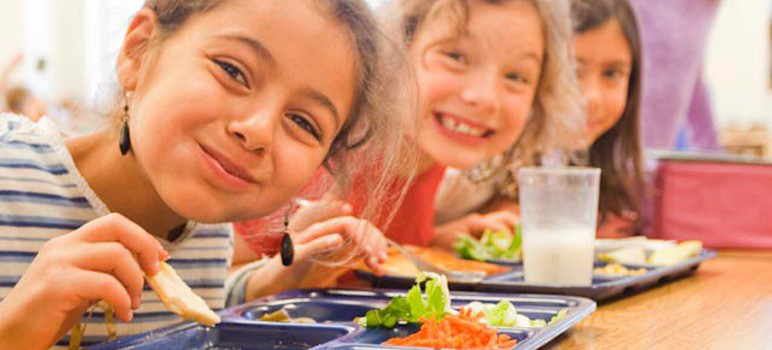Healthy meals equal healthy minds, and as the caretakers of young minds we have a duty to ensure that the nutritional needs of all students are being met right alongside their educational requirements.
We know from the abundance of research on the relationship between health and academic achievement that a balanced diet enables optimal performance for our students.
New federal nutrition standards have doubled the amount of fruits and vegetables served in school lunches. Increasing children’s intake of fruits and veggies will help to address the pressing issue of childhood obesity—currently an epidemic across the nation, with the percentage of overweight or obese children tripling in the last three decades.
But we can reverse this terrible trend. The Centers for Disease Control and Prevention have found that good nutrition promotes the proper growth and development of children, that there is a 15-percent reduction in school absences when kids eat nutritious lunches and that eating healthful foods is associated with improved cognitive function, memory and mood.
What is the easiest way for schools to comply with these new guidelines and improve student nutrition and well-being? One answer is salad bars.
In an effort to support schools and districts across Santa Clara County as they work to comply with the new nutritional policy, the Santa Clara County Office of Education, Silicon Valley Leadership Group, South Bay Labor Council and San Jose/Silicon Valley Chamber of Commerce have partnered for the second year in a row to sponsor the Lam Research Heart and Soles 5K on Feb. 7 to bring salad bars to schools in Silicon Valley. Part of the larger national Let’s Move Salad Bars to Schools effort, this event has already brought 48 salad bars to local schools.
By ensuring that every school that has a need for a salad bar gets one, we can guarantee that all children have access to great food. Please join us and support the introduction of healthier eating habits in our schools, so that we can curb the obesity epidemic and promote the good health, vitality and well being of all children. This can only help students truly focus on academic success every day in the classroom.


At the risk of pissing in the punch bowl, neither the entreaty nor website address outcome, only effort.
* What’s been the average student weight reduction of obese children at the 48 schools with salad bars? Has it made a difference?
* What’s been the outcome using less costly alternatives (e.g., eliminating snacks & sodas, labeling calorie content, lowering the calorie content of current offerings, scales & healthy weight contests, etc.)?
* To what extent is targeting ‘at risk’ (i.e, obese) children & parental counseling a more cost effective option?
Salad bars may be worthwhile, but entirely speculative without data. Seems like an opportunity for a credibility teaching moment.
> One answer is salad bars.
And another answer is meat. And potatoes. And carbohydrates.
We live in an age of nutrition extremism, and Michelle Obama is the shaman of the extremists.
Weird, extremists diets of any kind are dangerous,
American society has, at the same time, problems with both obesity and anorexia.
One of the biggest causes of obesity is food stamps, WIC, and other government food subsidy programs. In the past, the food intake of the “underclass” was naturally controlled by their limited budgets. But the big hearts and the political panderers kicked that constraint to the curb, and enabled a huge segment of the population who don’t have the self-discipline to get and keep a job to consume government provided food without practical limit.
For many of the underclass, if you put food in front of them, they will eat it. After all, that’s what food is for.
Result; epidemic obesity.
“Healthy Food Options in Our Schools” is just more runaway do-gooderism.
It’s entirely predictable that whatever problem they imagine they are solving will end up creating an unanticipated, even worse problem.